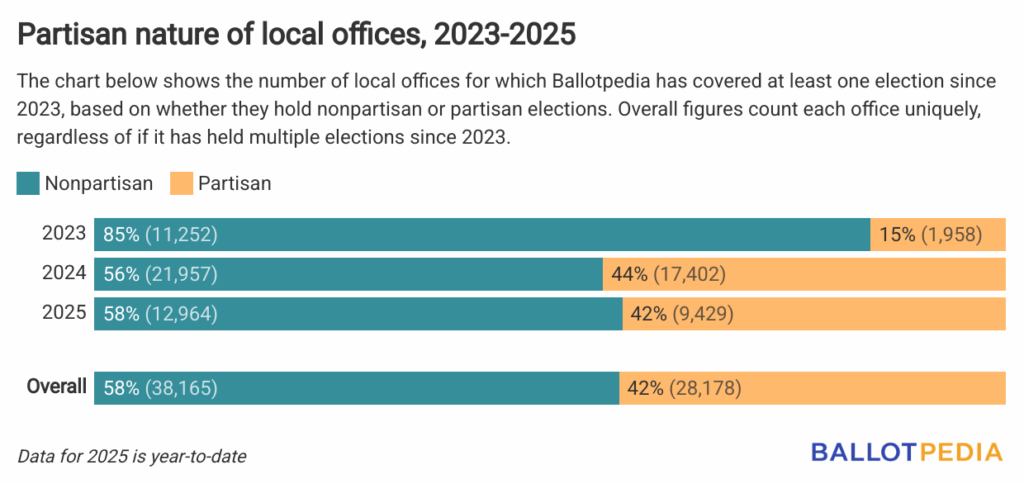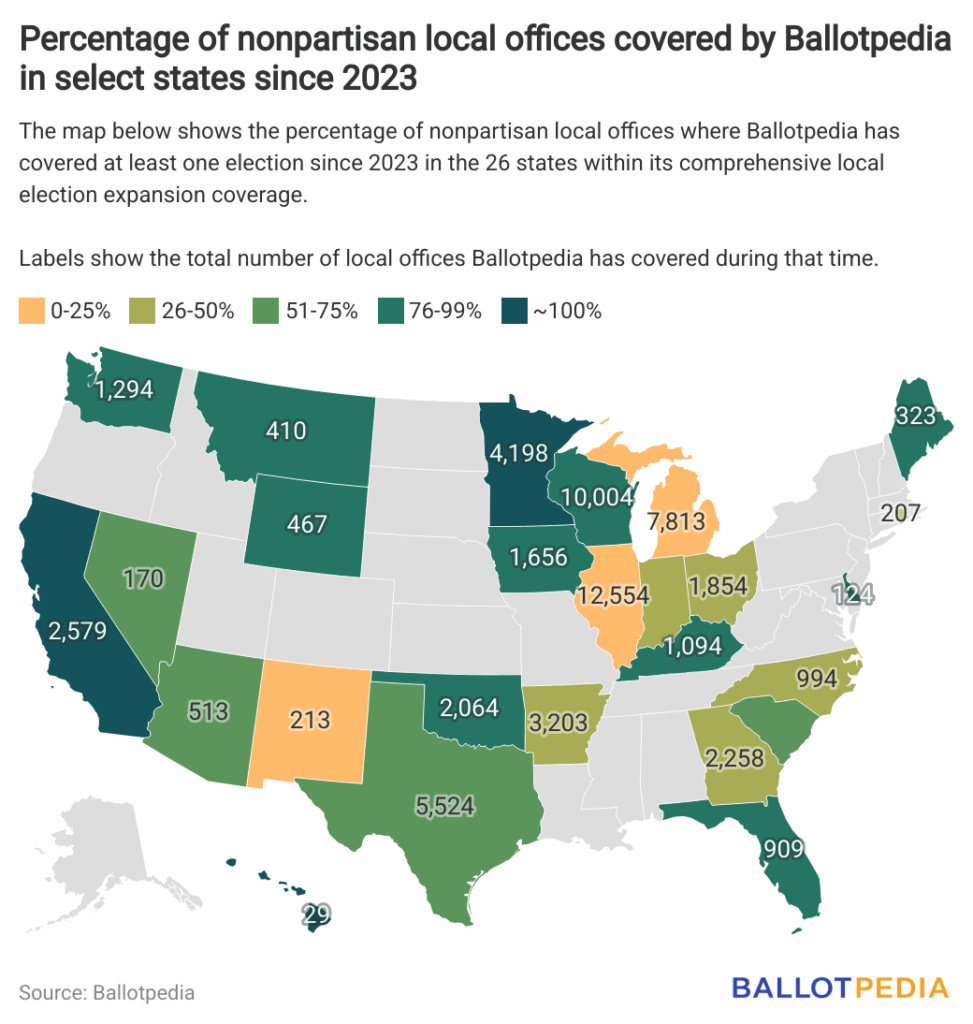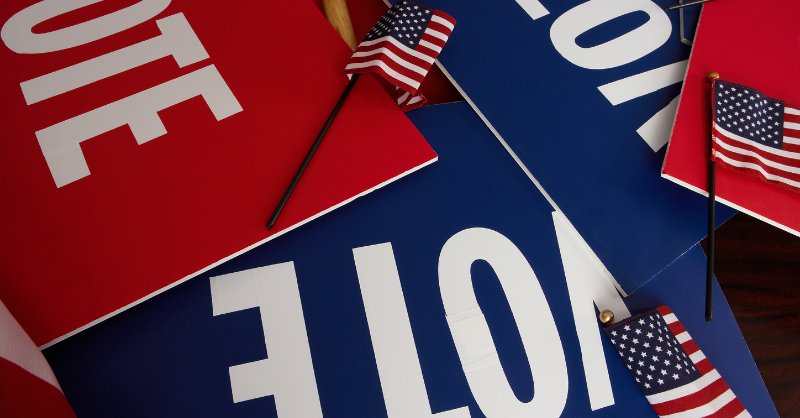Since 2023, Ballotpedia has covered elections for approximately 66,000 local offices. Of that total, 58% have been nonpartisan, and 42% have been partisan.
In this analysis, a nonpartisan office is one where voters elect candidates without any party labels on the ballot. A partisan office, on the other hand, is one where candidates either secure a party’s nomination or otherwise can appear on the ballot with their chosen labels.
These totals reflect Ballotpedia's growing coverage of local elections 2023 and only account for offices that have held at least one election since then. Today, Ballotpedia offers comprehensive local election coverage in 26 states. This is in addition to Ballotpedia's normal local election coverage, which includes the nation’s 100 most populous cities, its 200 largest school districts, and all state capitals.

Whether an office is nonpartisan or partisan depends on state or local laws, which often differ between specific office types.
In 2023, Ballotpedia’s local election coverage was largely limited to school board elections in 10 states. This accounts for the apparent spike in the image above, showing 85% of offices covered that year as nonpartisan. Most school boards are nonpartisan, with 40 of the 50 states requiring their districts to hold nonpartisan elections.
Since 2023, Ballotpedia has covered elections for 2,568 special-purpose district offices, which include things like fire control, irrigation, and library districts. Almost all these offices—2,477, or 96%—are nonpartisan.
Inversely, county-level offices—including county commissioners, clerks, and treasurers—are primarily partisan, with only 26% of the 13,866 offices Ballotpedia has covered being nonpartisan.

In the 26 states where Ballotpedia offers comprehensive local election coverage, this analysis found that three—California, Hawaii, and Minnesota—almost exclusively have nonpartisan local offices.
Ballotpedia has primarily covered elections to partisan local offices in Illinois, Michigan, and New Mexico.

While the distinction between nonpartisan and partisan offices may seem obvious, things are often more complicated in practice.
In Illinois, for example, certain offices—like those in villages—are technically nonpartisan, but candidates can run with certain labels other than those belonging to major parties.
Of the 12,554 local offices Ballotpedia has covered in Illinois, 4,946 fall into this category. In 2025, candidates to these offices ran with labels like Township Improvement, Right Choice, and Wauconda Screams 4 Ice Cream. Since these labels appeared on the ballot, those offices were counted as partisan in this analysis.
Click here to learn more about Ballotpedia's expanded local election coverage. And use the link below to learn more about party labels in elections nationwide.


